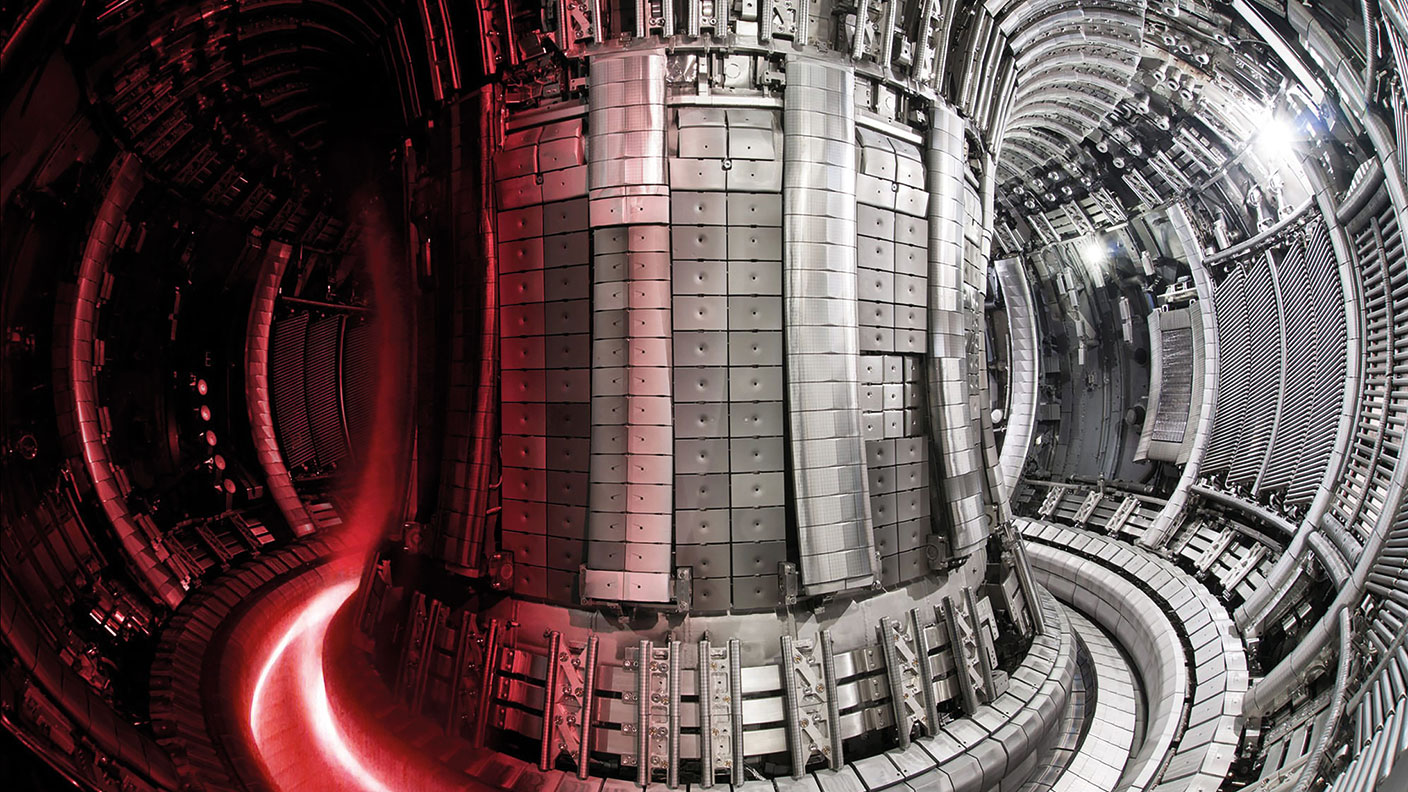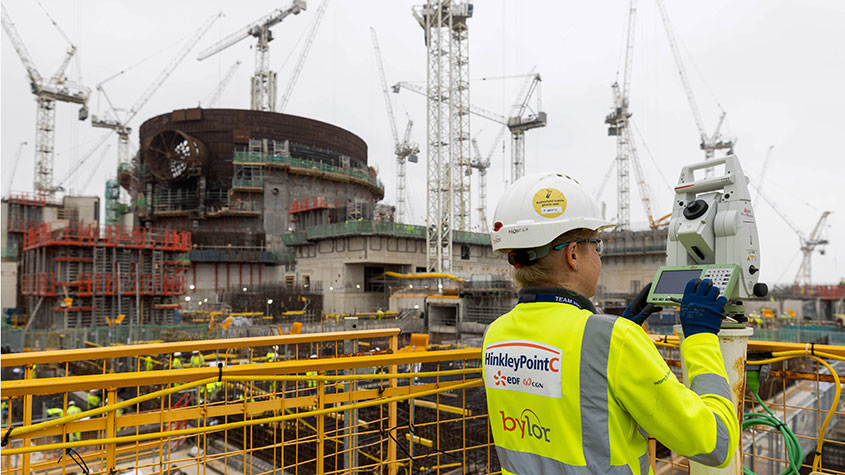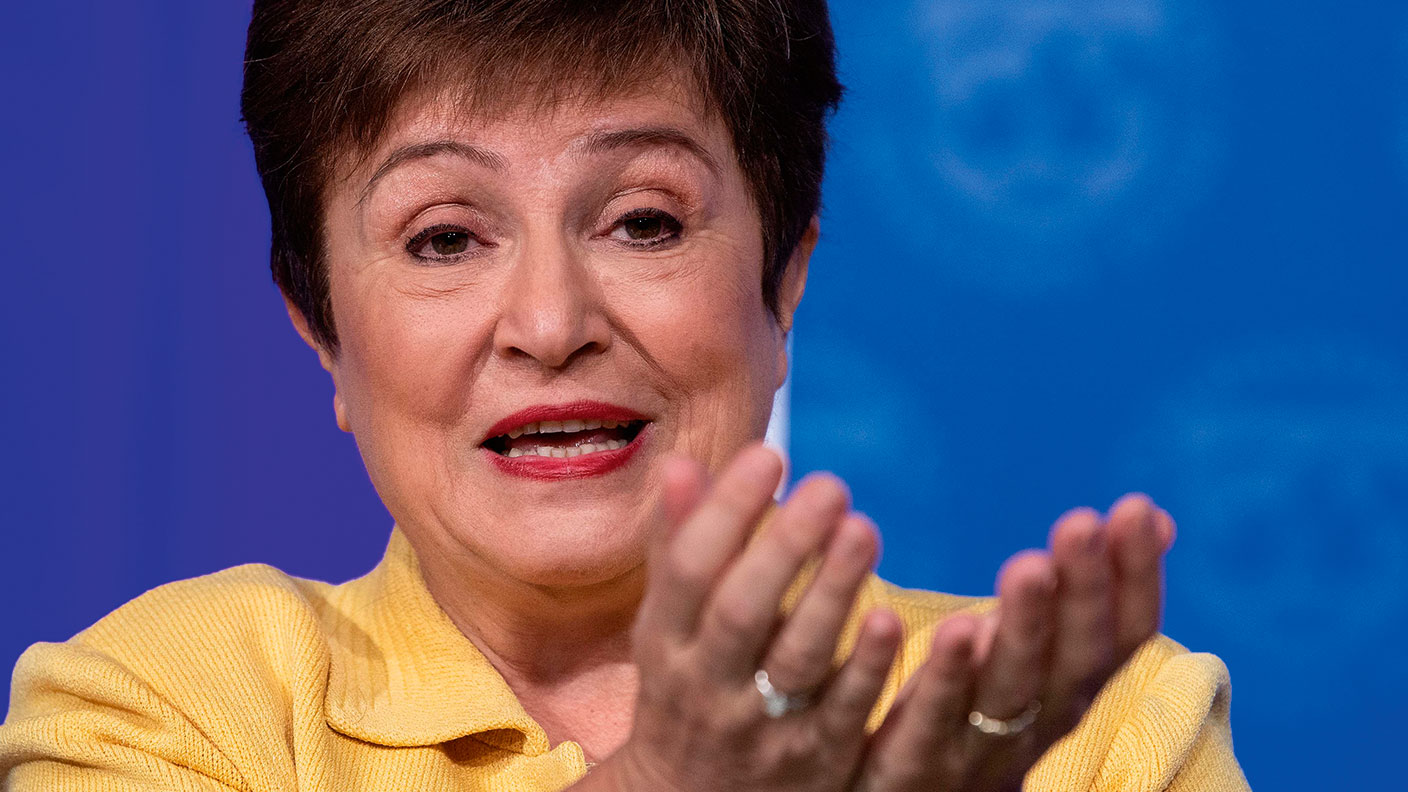A major breakthrough in the search for nuclear fusion
For 60 years, the hope of producing vast amounts of clean energy from nuclear fusion has remained tantalisingly beyond our grasp. Now scientists claim it’s within reach.

So this is the holy grail of nuclear fusion?
Not quite. Last week scientists at the Joint European Torus (JET), a nuclear fusion research project based near Oxford, set a new world record for the most energy ever generated from a fusion experiment. The team of researchers from the 30-nation Eurofusion consortium, based at the Culham Centre for Fusion Energy, produced 59 megajoules from a sustained reaction lasting five seconds.
That’s not in itself a big amount of energy: it’s about enough to boil 60 full kettles of water, or to power a 60-watt light bulb for 11 days. Nor is this the long-anticipated breakthrough in the story of nuclear fusion when, for the first time, fusion generates more energy than has been put in. But what happened in Oxfordshire is still a major breakthrough, scientists say.
Why is it a breakthrough?
First, because it more than doubles the previous record, set in 1997. Second, because the five seconds’ duration is “on a nuclear timescale, a very, very long time indeed”, says fusion expert Dr Arthur Turrell. Sustaining that level of energy and demonstrating the stability of the experimental plasma for five seconds is a big deal. Scaling up to five minutes, or five hours, should prove relatively easy, the JET scientists think. Most importantly, though, the JET result is significant as a kind of proof of concept.
MoneyWeek
Subscribe to MoneyWeek today and get your first six magazine issues absolutely FREE

Sign up to Money Morning
Don't miss the latest investment and personal finances news, market analysis, plus money-saving tips with our free twice-daily newsletter
Don't miss the latest investment and personal finances news, market analysis, plus money-saving tips with our free twice-daily newsletter
The method used by the JET team – including the isotopes of hydrogen used and the materials used to construct the doughnut-shaped experimental chamber (or “tokamak”) – validate the design choices and method for a massively bigger experimental reactor being built in southern France.
This ITER project involves an international team of scientists from China, Russia and the US, as well as Europe. If all goes well, scientists think the JET success means it’s likely that the French reactor, ITER, can achieve that holy grail: nuclear fusion that releases more energy (ten times more, some predict) than is put in.
What exactly is nuclear fusion?
It’s the process of squeezing together two forms of hydrogen – under great pressure and at unfathomably high temperatures – to release excess energy from their nuclei.
Nuclear fusion is not to be confused with nuclear fission, which involves splitting the unstable nucleus of a single atom into two, releasing large amounts of energy. Fission is the basis of all hitherto existing nuclear power, as well as the bombs dropped on Hiroshima and Nagasaki.
Fusion is different. It involves the fusing together of two nuclei from two separate lighter atoms (two isotopes of hydrogen) to create a single new nucleus of a heavier atom (helium) – a process that releases a vast amount of energy.
Scientists realised about 100 years ago that this is the process that powers the Sun (and all stars) and is thus ultimately responsible for the existence of our solar system and life on Earth. If it can be replicated on Earth, it could provide a clean and inexhaustible supply of energy.
So why hasn’t it been done already?
The challenge is threefold. To achieve fusion you need a very high temperature to give hydrogen atoms enough energy to overcome repulsion between protons. This allows electrons to be separated from nuclei and the gas to become a plasma, potentially enabling fusion. In the Sun, this happens at 15 million degrees Celsius. But on Earth, because it’s not possible to replicate the Sun’s extreme pressures, it has to be even higher, more than 100 million.
Second, you need sufficiently high pressure and plasma particle density so that lots of collisions do in fact occur.
nd third, you need a way of holding the plasma in place for long enough for fusion to happen. Scientists need to solve all three problems simultaneously, while capturing the released energy efficiently.
What’s the solution?
Since the 1950s, almost all efforts at achieving this have involved a tokamak, a Soviet invention that is a doughnut-shaped vessel in which two hydrogen isotopes (deuterium and tritium) are super-heated into a plasma that is held in place by a magnetic cage inside a vacuum. JET’s is currently the biggest tokamak in the world; ITER’s will be ten times bigger.
But this so-called “magnetic confinement fusion” (MCF) method is not the only possibility. The other main option being researched is “inertial-confinement fusion” (ICF), which uses powerful lasers to implode pellets containing hydrogen atoms, and then compressing that fuel (at much higher pressures than is possible using tokamaks) to the point of fusion.
Last August, the US National Ignition Facility, a laser-based inertial-confinement research institute at Livermore, California, came the closest yet to achieving net energy gain (it released 70 units of energy per 100 input). A third possible method being explored is “magnetised target fusion” (MTF), which would use electrical pulses to create plasma, then steam-powered pistons to compress it.
What are the companies to watch?
The vast sums and decades-long time frames involved in fusion research mean that the big projects are state-backed. But there are lots of exciting private enterprises working on fusion – mostly in the laser and MTF fields – and attracting around $4bn in investment funding last year. I
n December, US start-up Commonwealth Fusion Systems secured $1.8bn from backers including Bill Gates and George Soros; a few weeks earlier rival Helion raised $500m from Peter Thiel’s investment vehicle, among others. Other businesses in the sector include TAE Technologies in California, Zap Energy, and Canada’s General Fusion.
In the UK, First Light Fusion and Tokamak Energy are both based near Culham, where the Culham Centre for Fusion Energy’s own reactor, due to open in 2040, is intended to demonstrate the commercial practicality of fusion.
In Germany, Marvel Fusion has attracted investment from Siemens and Thales, among others.
Get the latest financial news, insights and expert analysis from our award-winning MoneyWeek team, to help you understand what really matters when it comes to your finances.
Simon Wilson’s first career was in book publishing, as an economics editor at Routledge, and as a publisher of non-fiction at Random House, specialising in popular business and management books. While there, he published Customers.com, a bestselling classic of the early days of e-commerce, and The Money or Your Life: Reuniting Work and Joy, an inspirational book that helped inspire its publisher towards a post-corporate, portfolio life.
Since 2001, he has been a writer for MoneyWeek, a financial copywriter, and a long-time contributing editor at The Week. Simon also works as an actor and corporate trainer; current and past clients include investment banks, the Bank of England, the UK government, several Magic Circle law firms and all of the Big Four accountancy firms. He has a degree in languages (German and Spanish) and social and political sciences from the University of Cambridge.
-
 Investors will reap long-term rewards from UK equities
Investors will reap long-term rewards from UK equitiesOpinion Nick Train, portfolio manager, Finsbury Growth & Income Trust, highlights three UK equities where he’d put his money
-
 The graphene revolution is progressing slowly but surely
The graphene revolution is progressing slowly but surelyEnthusiasts thought the discovery that graphene, a form of carbon, could be extracted from graphite would change the world. They might've been early, not wrong.
-
 Investors should cheer the coming nuclear summer
Investors should cheer the coming nuclear summerThe US and UK have agreed a groundbreaking deal on nuclear power, and the sector is seeing a surge in interest from around the world. Here's how you can profit
-
 Liability-driven investment: the “doom loop” in the bond market
Liability-driven investment: the “doom loop” in the bond marketBriefings LDI – an investment strategy used by defined-benefit pension funds – was at the centre of last week’s panic in gilts. What exactly happened, and how was it tackled?
-
 India’s economy has come a long way in 75 years, but where next?
India’s economy has come a long way in 75 years, but where next?Briefings India has come a long way since independence to become the world's fifth-largest economy. But early mistakes and now a divisive leader are holding back the economy’s potential.
-
 Why now looks like a good time to invest in nuclear power
Why now looks like a good time to invest in nuclear powerAnalysis Nuclear power has a terrible PR problem. But it has a vital role to play in energy security, to provide baseload power, and to reduce our carbon emissions. John Stepek looks at the best way to invest.
-
 Just how powerful is artificial intelligence becoming?
Just how powerful is artificial intelligence becoming?Briefings An uncannily human response from an artificial intelligence program sparked a minor panic last month. But just how powerful are machines getting – and should we be worried?
-
 What's behind Sri Lanka’s crippling debt crisis?
What's behind Sri Lanka’s crippling debt crisis?Briefings Sri Lanka has been hit by a triple whammy of economic shocks and has gone to the IMF for a bailout. It may just be the first domino to fall in a global debt crisis.
-
 The emerging-markets debt crisis
The emerging-markets debt crisisBriefings Slowing global growth, surging inflation and rising interest rates are squeezing emerging economies harder than most. Are we on the brink of a major catastrophe?
-
 Should we levy a windfall tax on Big Oil's big profits?
Should we levy a windfall tax on Big Oil's big profits?Briefings Soaring oil prices mean huge profits for energy firms. Politicians are keen to impose windfall taxes, but that could discourage vital investment in new production.